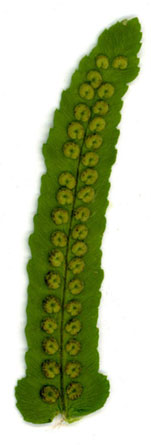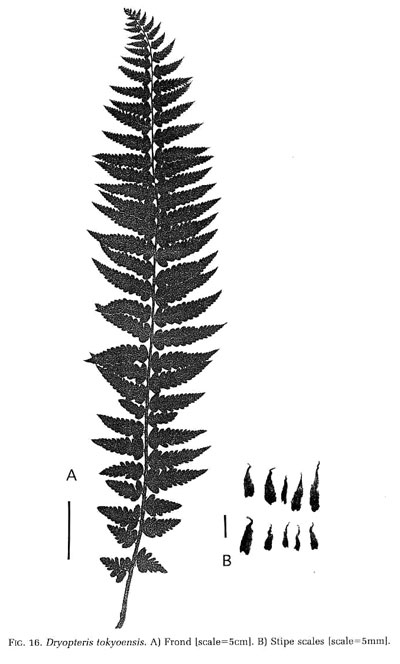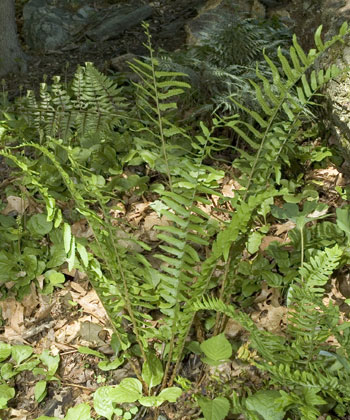| Dryopteris tokyoensis | ||
|
Etymology
Tokyoensis is the Latinization of the city in Japan, Tokyo.
Description
Rhizome: short, thick, erect, also branching infrequently, scaly.
Frond: 90 cm high by 20 cm wide, deciduous, monomorphic, blade/stipe ratio: 6:1. Stipe: grooved, green to purple, adjacent fronds exhibiting a variety of shades, scales lanceolate to long-ovate, abruptly acuminate, to 1.5 cm, membranous, brown, often darker in basal portion, vascular bundles: 3-7 in a c-shaped pattern. Blade: 1-pinnate, but in some specimens the pinnae pass over the line from lobed to pinnatifid, oblanceolate, widest above the middle, herbaceous to somewhat leathery, scales on rachis lanceolate to linear. Pinnae: 25 to 35 pair, shallowly lobed to pinnatifid, the lowest pair much reduced; the proximal lobe enlarged, ear-like; veins simple, immersed on top surface. Sori: round, 1 per lobe of the pinna, medial, indusium: reniform, at a sinus, sporangia: brownish. Culture
Habitat: sunny or half-shaded wetlands.
Distribution: China, Japan, Korea.
Hardy to -25°C, USDA Zone 5.
Distinctive Characteristics
Among the slenderest, most upright of fronds, the blade stipe ratio also distinctive, and the auricled pinnae.
Synonyms
Nephrodium tokyoense Matsum. ex Makino Aspidium transitorium Christ |
|
|

Dryopteris tokyoensis. Fertile pinnae are confined to the top third of larger fronds. Late June; the sporangia are beginning to expand beyond the indusia, but there is some time to go before maturation. Scan: Tom Stuart |

Dryopteris tokyoensis. Veins free, forking. The veins are depressed, embossed into the pinna, and the shadow of the sori is visible through the lamina on the left side. Photo: Tom Stuart |

Dryopteris tokyoensis. Illustration from The Cultivated Species of the Fern Genus Dryopteris in the United States, Barbara Joe Hoshizaki and Kenneth A. Wilson, American Fern Journal, 89, 1, (1999), with permission. |
